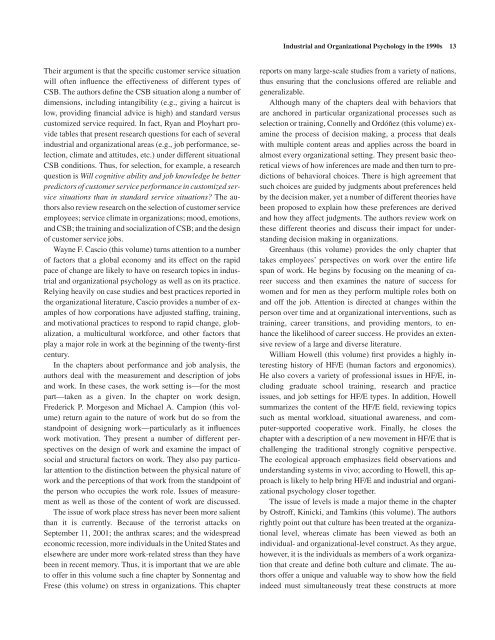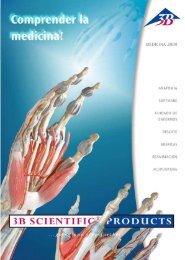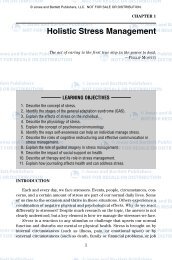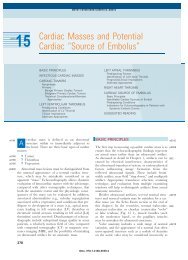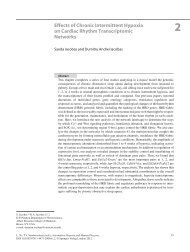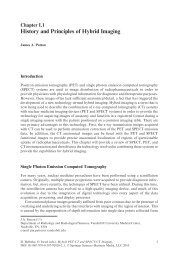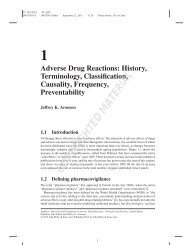Stability and Change in Industrial and Organizational ... - Axon
Stability and Change in Industrial and Organizational ... - Axon
Stability and Change in Industrial and Organizational ... - Axon
Create successful ePaper yourself
Turn your PDF publications into a flip-book with our unique Google optimized e-Paper software.
orm_ch01.qxd 9/26/02 2:59 PM Page 13<br />
Their argument is that the specific customer service situation<br />
will often <strong>in</strong>fluence the effectiveness of different types of<br />
CSB. The authors def<strong>in</strong>e the CSB situation along a number of<br />
dimensions, <strong>in</strong>clud<strong>in</strong>g <strong>in</strong>tangibility (e.g., giv<strong>in</strong>g a haircut is<br />
low, provid<strong>in</strong>g f<strong>in</strong>ancial advice is high) <strong>and</strong> st<strong>and</strong>ard versus<br />
customized service required. In fact, Ryan <strong>and</strong> Ployhart provide<br />
tables that present research questions for each of several<br />
<strong>in</strong>dustrial <strong>and</strong> organizational areas (e.g., job performance, selection,<br />
climate <strong>and</strong> attitudes, etc.) under different situational<br />
CSB conditions. Thus, for selection, for example, a research<br />
question is Will cognitive ability <strong>and</strong> job knowledge be better<br />
predictors of customer service performance <strong>in</strong> customized service<br />
situations than <strong>in</strong> st<strong>and</strong>ard service situations? The authors<br />
also review research on the selection of customer service<br />
employees; service climate <strong>in</strong> organizations; mood, emotions,<br />
<strong>and</strong> CSB; the tra<strong>in</strong><strong>in</strong>g <strong>and</strong> socialization of CSB; <strong>and</strong> the design<br />
of customer service jobs.<br />
Wayne F. Cascio (this volume) turns attention to a number<br />
of factors that a global economy <strong>and</strong> its effect on the rapid<br />
pace of change are likely to have on research topics <strong>in</strong> <strong>in</strong>dustrial<br />
<strong>and</strong> organizational psychology as well as on its practice.<br />
Rely<strong>in</strong>g heavily on case studies <strong>and</strong> best practices reported <strong>in</strong><br />
the organizational literature, Cascio provides a number of examples<br />
of how corporations have adjusted staff<strong>in</strong>g, tra<strong>in</strong><strong>in</strong>g,<br />
<strong>and</strong> motivational practices to respond to rapid change, globalization,<br />
a multicultural workforce, <strong>and</strong> other factors that<br />
play a major role <strong>in</strong> work at the beg<strong>in</strong>n<strong>in</strong>g of the twenty-first<br />
century.<br />
In the chapters about performance <strong>and</strong> job analysis, the<br />
authors deal with the measurement <strong>and</strong> description of jobs<br />
<strong>and</strong> work. In these cases, the work sett<strong>in</strong>g is—for the most<br />
part—taken as a given. In the chapter on work design,<br />
Frederick P. Morgeson <strong>and</strong> Michael A. Campion (this volume)<br />
return aga<strong>in</strong> to the nature of work but do so from the<br />
st<strong>and</strong>po<strong>in</strong>t of design<strong>in</strong>g work—particularly as it <strong>in</strong>fluences<br />
work motivation. They present a number of different perspectives<br />
on the design of work <strong>and</strong> exam<strong>in</strong>e the impact of<br />
social <strong>and</strong> structural factors on work. They also pay particular<br />
attention to the dist<strong>in</strong>ction between the physical nature of<br />
work <strong>and</strong> the perceptions of that work from the st<strong>and</strong>po<strong>in</strong>t of<br />
the person who occupies the work role. Issues of measurement<br />
as well as those of the content of work are discussed.<br />
The issue of work place stress has never been more salient<br />
than it is currently. Because of the terrorist attacks on<br />
September 11, 2001; the anthrax scares; <strong>and</strong> the widespread<br />
economic recession, more <strong>in</strong>dividuals <strong>in</strong> the United States <strong>and</strong><br />
elsewhere are under more work-related stress than they have<br />
been <strong>in</strong> recent memory. Thus, it is important that we are able<br />
to offer <strong>in</strong> this volume such a f<strong>in</strong>e chapter by Sonnentag <strong>and</strong><br />
Frese (this volume) on stress <strong>in</strong> organizations. This chapter<br />
<strong>Industrial</strong> <strong>and</strong> <strong>Organizational</strong> Psychology <strong>in</strong> the 1990s 13<br />
reports on many large-scale studies from a variety of nations,<br />
thus ensur<strong>in</strong>g that the conclusions offered are reliable <strong>and</strong><br />
generalizable.<br />
Although many of the chapters deal with behaviors that<br />
are anchored <strong>in</strong> particular organizational processes such as<br />
selection or tra<strong>in</strong><strong>in</strong>g, Connelly <strong>and</strong> Ordóñez (this volume) exam<strong>in</strong>e<br />
the process of decision mak<strong>in</strong>g, a process that deals<br />
with multiple content areas <strong>and</strong> applies across the board <strong>in</strong><br />
almost every organizational sett<strong>in</strong>g. They present basic theoretical<br />
views of how <strong>in</strong>ferences are made <strong>and</strong> then turn to predictions<br />
of behavioral choices. There is high agreement that<br />
such choices are guided by judgments about preferences held<br />
by the decision maker, yet a number of different theories have<br />
been proposed to expla<strong>in</strong> how these preferences are derived<br />
<strong>and</strong> how they affect judgments. The authors review work on<br />
these different theories <strong>and</strong> discuss their impact for underst<strong>and</strong><strong>in</strong>g<br />
decision mak<strong>in</strong>g <strong>in</strong> organizations.<br />
Greenhaus (this volume) provides the only chapter that<br />
takes employees’ perspectives on work over the entire life<br />
span of work. He beg<strong>in</strong>s by focus<strong>in</strong>g on the mean<strong>in</strong>g of career<br />
success <strong>and</strong> then exam<strong>in</strong>es the nature of success for<br />
women <strong>and</strong> for men as they perform multiple roles both on<br />
<strong>and</strong> off the job. Attention is directed at changes with<strong>in</strong> the<br />
person over time <strong>and</strong> at organizational <strong>in</strong>terventions, such as<br />
tra<strong>in</strong><strong>in</strong>g, career transitions, <strong>and</strong> provid<strong>in</strong>g mentors, to enhance<br />
the likelihood of career success. He provides an extensive<br />
review of a large <strong>and</strong> diverse literature.<br />
William Howell (this volume) first provides a highly <strong>in</strong>terest<strong>in</strong>g<br />
history of HF/E (human factors <strong>and</strong> ergonomics).<br />
He also covers a variety of professional issues <strong>in</strong> HF/E, <strong>in</strong>clud<strong>in</strong>g<br />
graduate school tra<strong>in</strong><strong>in</strong>g, research <strong>and</strong> practice<br />
issues, <strong>and</strong> job sett<strong>in</strong>gs for HF/E types. In addition, Howell<br />
summarizes the content of the HF/E field, review<strong>in</strong>g topics<br />
such as mental workload, situational awareness, <strong>and</strong> computer-supported<br />
cooperative work. F<strong>in</strong>ally, he closes the<br />
chapter with a description of a new movement <strong>in</strong> HF/E that is<br />
challeng<strong>in</strong>g the traditional strongly cognitive perspective.<br />
The ecological approach emphasizes field observations <strong>and</strong><br />
underst<strong>and</strong><strong>in</strong>g systems <strong>in</strong> vivo; accord<strong>in</strong>g to Howell, this approach<br />
is likely to help br<strong>in</strong>g HF/E <strong>and</strong> <strong>in</strong>dustrial <strong>and</strong> organizational<br />
psychology closer together.<br />
The issue of levels is made a major theme <strong>in</strong> the chapter<br />
by Ostroff, K<strong>in</strong>icki, <strong>and</strong> Tamk<strong>in</strong>s (this volume). The authors<br />
rightly po<strong>in</strong>t out that culture has been treated at the organizational<br />
level, whereas climate has been viewed as both an<br />
<strong>in</strong>dividual- <strong>and</strong> organizational-level construct. As they argue,<br />
however, it is the <strong>in</strong>dividuals as members of a work organization<br />
that create <strong>and</strong> def<strong>in</strong>e both culture <strong>and</strong> climate. The authors<br />
offer a unique <strong>and</strong> valuable way to show how the field<br />
<strong>in</strong>deed must simultaneously treat these constructs at more


